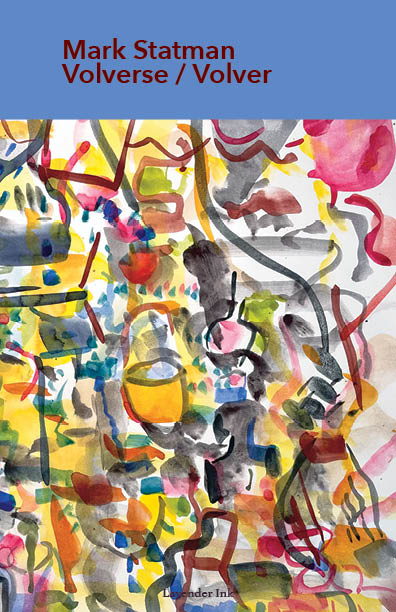
Part 2 MARK STATMAN: MEXICO AND THE POETRY OF GRIEF AND CELEBRATION
Part 2 of my interview with Mark Statman looks closely at Mark’s Latin American poetic influences, his life in Mexico and ends with an extract
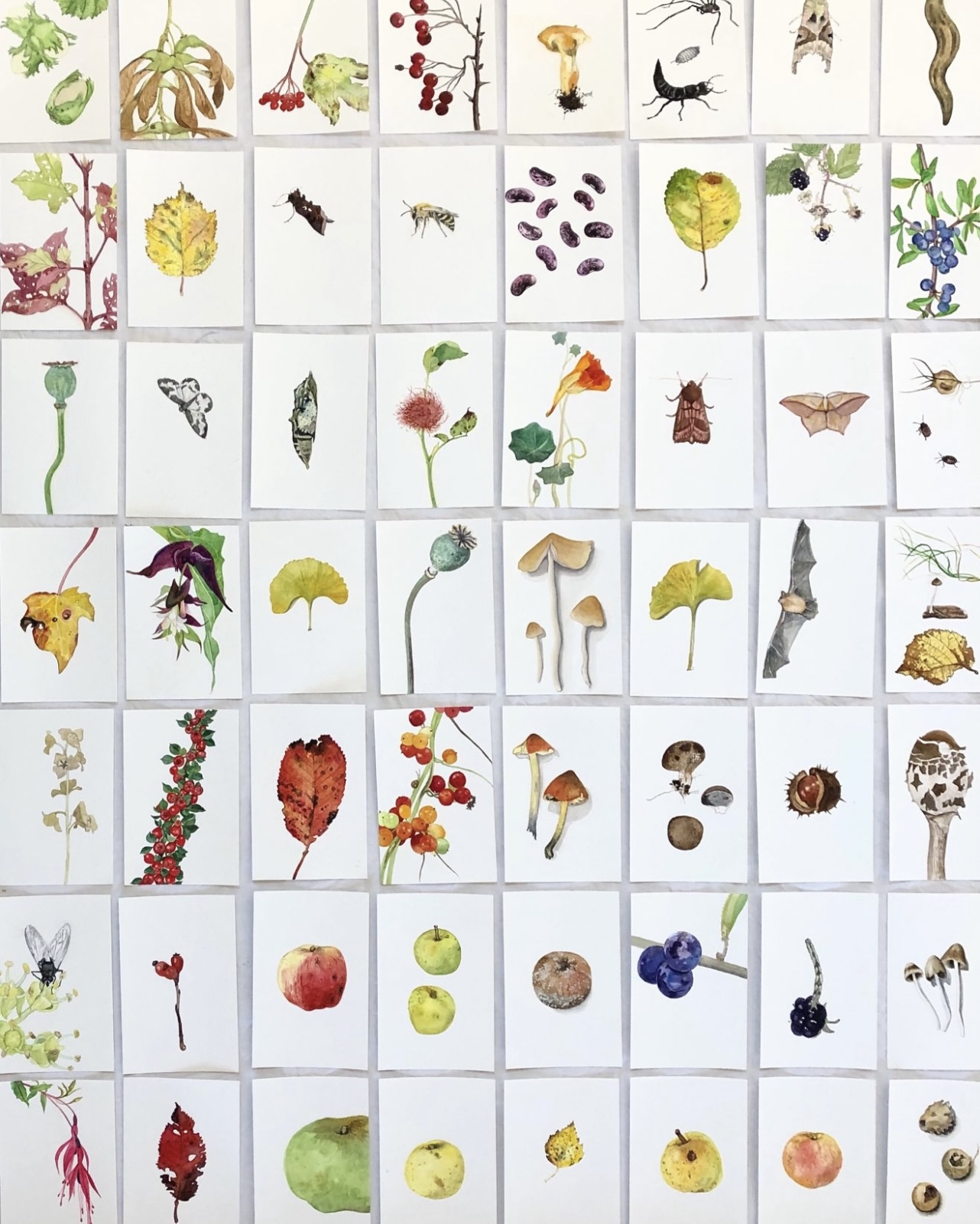
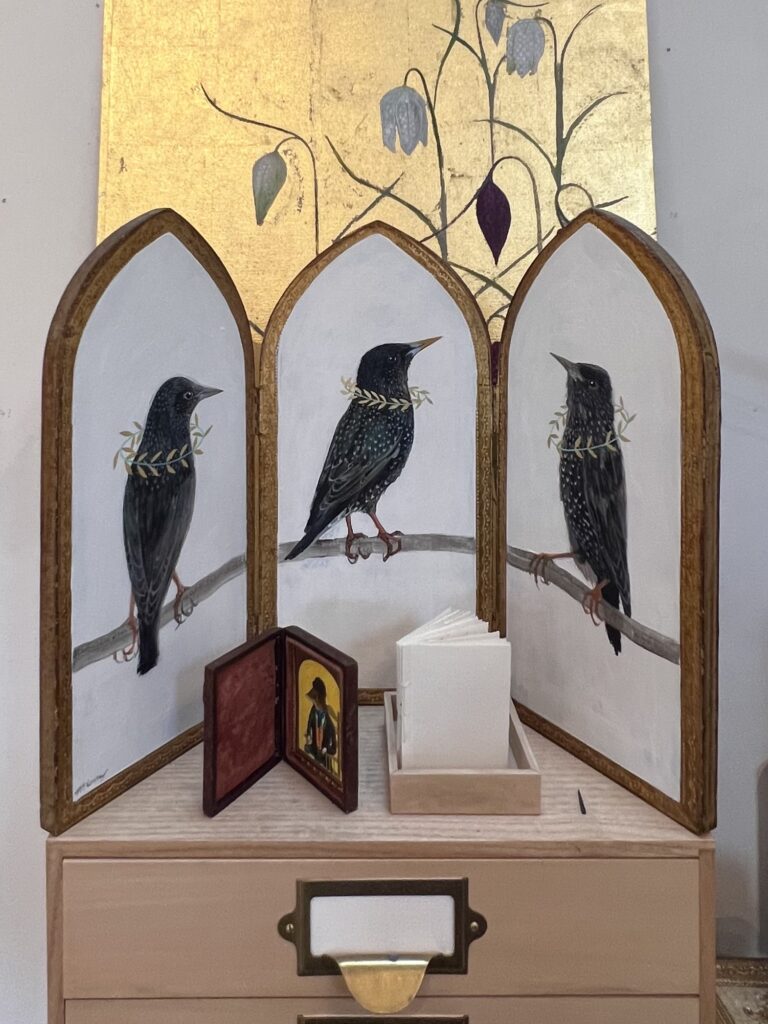
I interviewed Liza Adamczewski, painter, printer, creator of postcards, ceramics and golden triptychs. Liza told me about how she works on her art, her love of nature and rewilding projects. Liza says about her art, “Our rewilding project has really changed the way I work & the materials I use. It is present in everything I do as an artist.”
Leslie: Tell us about your #1000postcards project and what you’ve learned from painting postcards. Why do you think of it as ‘a mini holiday’?
Liza: Painting postcards is a bit like practising my scales. I have noticed that I have learnt to be more definite in my mark-making, more confident as the project goes on – going straight in with the brush from looking through the eye directly to the hand. The immediacy of my mark-making has made my painting more confident.
I have never been able to keep sketchbooks I start them. I never finish them but postcards, on the other hand are interchangeable and unbound. They make an index that can be rearranged into multiple and infinite ways. I can write information on the back. They become a scientific record that I can refer to. They can illustrate concepts depending on how one groups them.
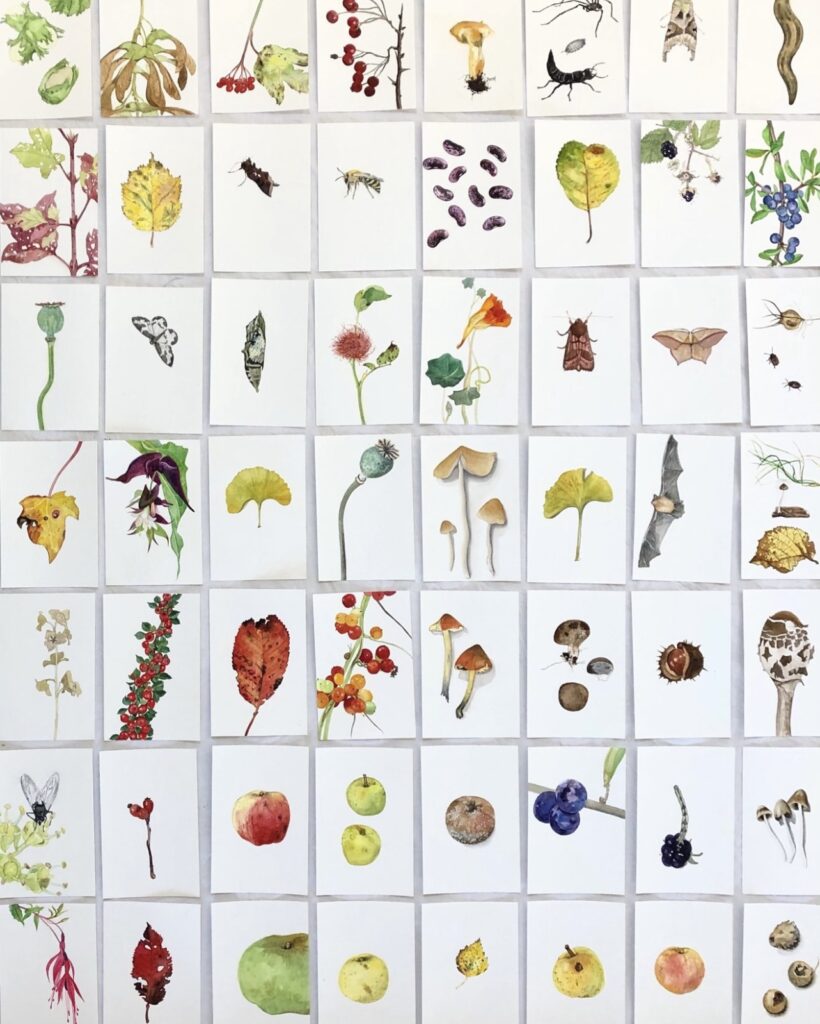
They are a mini-holiday artistically for me because they are not grappling on a day-to-day card-to-card basis with the concepts behind my other work. So they are a mental break. The postcards are more an observation and scientific record of what the biodiversity of my land is. Because of the way we look after our land, it’s a positive thing for me every time I find a new species to paint.
My other work tends to be about sadder subject matters the loss of biodiversity and the impact we have on the natural world. I’m always interested in inviting people into this conversation through beauty. Or through our spiritual connection with nature
Leslie: What’s the relationship between your rewilding project and your art?
Liza: Our rewilding project has really changed the way I work & the materials I use. It is present in everything I do as an artist. I cannot go for a walk around my land without finding new inspiration. Before when I lived by the sea my work was about space and light but I felt it was going nowhere. Then it became more and more about climate change and loss. I moved here to save this place its sixty acres of sanctuary especially for butterflies.

Leslie: What’s the personal significance of using triptychs and icons (as well as musical icons) in your art?
Liza: I adore using religious iconography in my work because I have my most spiritual experiences when connecting with nature and have done so since I was a small child. I often think if there was a God, they would be asking us to pray less and do more to save the planet that they created. As a non-believer in any religion, I find the visual language of Christianity extremely useful in helping me to express my ideas. Throughout the history of art and religion, images have always been used to educate people or to get a message across. Triptychs and gold have played a major part in this. The deep thoughts that humans have directed towards altarpieces have saturated these things with meaning
I believe many people have a deeply spiritual relationship with the natural world. Gold for instance, which I’m obsessed with, has always been a way since pre-history for mankind to raise something to the level of the gods. It symbolises the precious, the divine, the eternal. In Ireland where I was born those early gold objects like the little gold boat are just sublime.
Leslie: How do you use ceramics and humour in your art?
Liza: Ceramics for me have always been a way of relaxing. I adore early English Delft but it’s so special one wouldn’t want to use it every day for fear of breakages. So I decided to start making my own. I like to have the handmade in my home. Old pieces of furniture, hand-painted, pottery, hand-painted tiles. I enjoy having things that I made specifically for my home that reflect my interests. Humour makes life bearable and is needed literally in this day and age just to survive.
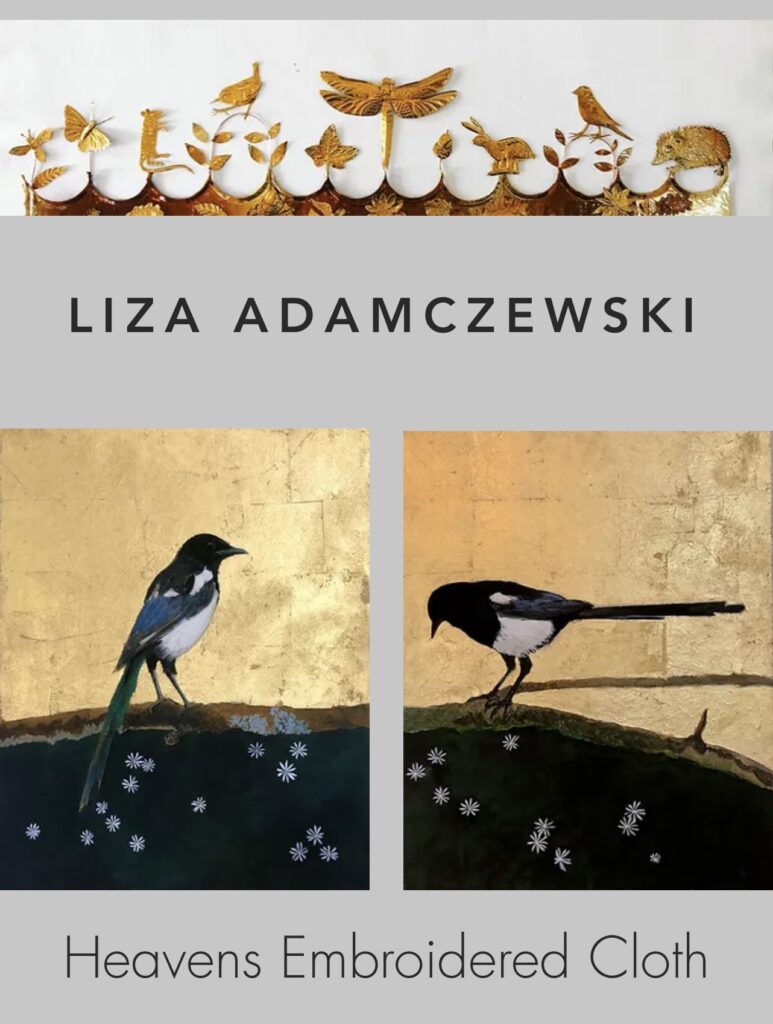
Leslie: How do subjectively experience the process of painting birds?
Liza: When I am painting birds, I feel like I am growing wings and escaping.
When I am painting birds, I feel free. When I’m painting birds I can pour my emotion into it, I can think about life, death, wind, air, space, freedom, weightlessness .
I was dreaming once that I was flying, I ran down towards the sea. In the dream I was near the Seven Sisters in Sussex, a place I know well , and when I launched myself off the chalk white cliff I looked down at the sea. The sun was behind me and my shadow on the surface of the water was the shadow of a bird.
Maybe I was a bird, or I will become a bird. Maybe the flight of a bird will always be something that humans reach for to feel the impossible lightness of a free mind.
Next week I interview Jeff Young, whose memoir was shortlisted for the Costa Prize
ABOUT LESLIE TATE’S BOOKS:

Part 2 of my interview with Mark Statman looks closely at Mark’s Latin American poetic influences, his life in Mexico and ends with an extract
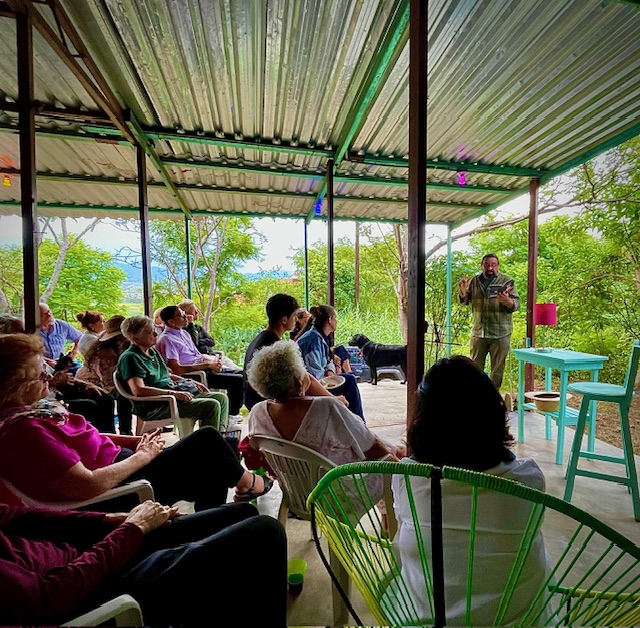
I interviewed international poet and translator Mark Statman about Volverse/Volver, his 14th published collection. Mark, who has won national arts awards, is Emeritus Professor of Literary

I interviewed Lisa Dart, finalist in the Grolier, Aesthetica and Troubadour Poetry Prizes and author of The Linguistics of Light (poems, Salt, 2008), Fathom (prose
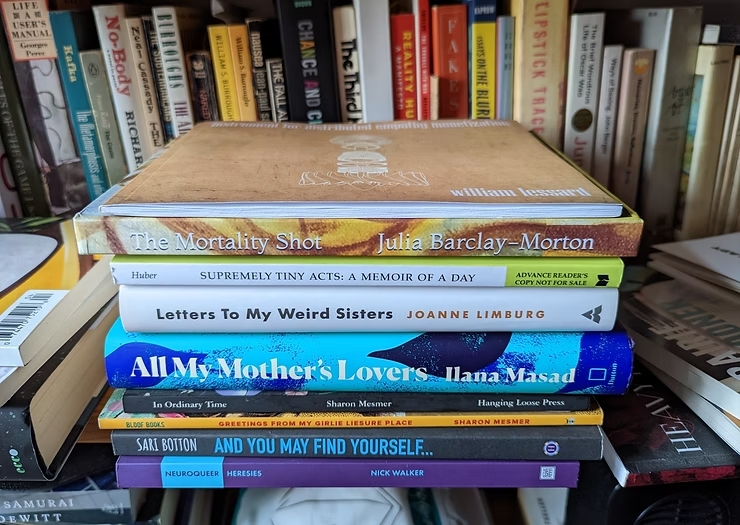
I interviewed writer Julia Lee Barclay-Morton about her experience of autism. Julia began as an experimental dramatist in New York, moving to the UK to

I interviewed Gillean McDougall from Glasgow, who edited the collaborative projects Honest Error (on Charles Rennie Mackintosh and his wife Margaret Macdonald) and Writing the
| Cookie | Duration | Description |
|---|---|---|
| cookielawinfo-checkbox-analytics | 11 months | This cookie is set by GDPR Cookie Consent plugin. The cookie is used to store the user consent for the cookies in the category "Analytics". |
| cookielawinfo-checkbox-functional | 11 months | The cookie is set by GDPR cookie consent to record the user consent for the cookies in the category "Functional". |
| cookielawinfo-checkbox-necessary | 11 months | This cookie is set by GDPR Cookie Consent plugin. The cookies is used to store the user consent for the cookies in the category "Necessary". |
| cookielawinfo-checkbox-others | 11 months | This cookie is set by GDPR Cookie Consent plugin. The cookie is used to store the user consent for the cookies in the category "Other. |
| cookielawinfo-checkbox-performance | 11 months | This cookie is set by GDPR Cookie Consent plugin. The cookie is used to store the user consent for the cookies in the category "Performance". |
| viewed_cookie_policy | 11 months | The cookie is set by the GDPR Cookie Consent plugin and is used to store whether or not user has consented to the use of cookies. It does not store any personal data. |